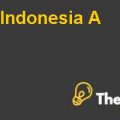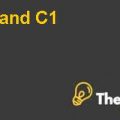Introduction
This report discusses and evaluates the recent move made by the international carrier company Emirates regarding its decision to invest in the new aircraft A380 launched by Airbus with a seating capacity of more than 600. The current situation of the Aviation Industry has been highlighted first using Porter’s Five Forces analysis (appendix1). A general SWOT analysis of Emirates has been done to point out areas of strengths, weaknesses, opportunities and threats (Appendix 2).
In order to evaluate this move further, this strategic move as been studied by looking at the pros and cons of this investment while highlighting the strengths and weaknesses of Emirates in contrast to its competitors. Furthermore, the sources of competitive edge for Emirates have been studied for finally concluding whether this move or growth strategy would prove to be a source of competitive edge for Emirates or not.
Aviation Industry: Porter’s Five Forces
A competitive analysis of the Aviation Industry shows that individual airline companies do not make abnormal profits. Despite incredible growth in this industry they have profit margins of less than 1% on average.
The power of the suppliers in the industry is high especially since airplane supplying companies like Boeing and Airbus supply majority of the planes. Likewise airports and air traffic controls have monopolies. Employees are also mostly unionized so that leaves less bargaining power with airline companies to negotiate labor costs. Likewise there is little control over costs like fuel prices which are determined by global oil markets so even in this case airline companies are price takers (The Economist, 2014).
The bargaining power of the customer is also high especially with many competing airlines and many customers so alternatives are easily available. This does not leave airline companies like Emirates with much control over pricing (The Economist, 2014).
The threat of substitute products is medium especially for international travel since there are not many alternatives when it comes to specific routes. However, in situations where alternatives like trains or busses are available, the threat of substitutes is there. With latest developments in technologies, options of video conferencing have also become substitutes to air travel (The Economist, 2014).
Threat of new entrants in this industry is medium to low especially as there are high capital requirements for starting a new airline company. However with options like leasing available, operating small airlines from regional airports has become a possibility (The Economist, 2014).
The degree of competition in the aviation industry is high since customers are price sensitive and it is difficult to differentiate services. Since there are high fixed costs involved carriers would rather lower their prices than fly with less customers. This analysis explains why this industry offers low pricing power to airline companies like Emirates and why they may have low profit margins (The Economist, 2014).
SWOT Analysis: Emirates
A SWOT analysis for Emirates shows that the air carrier has become by far the biggest international carrier. Weaknesses for carriers like Emirates include high fuel costs which makes up 38% of Emirates operating costs (Nadia Saleem, 2014). These costs have been further discussed in the section of sources of competitive analysis in the end of the report.
Opportunities exist in the form of assistance of $42 billion in assistance given to Gulf carriers by their state owners in the past decade. Gulf carriers like Emirates also enjoy low labor costs party because of their home states’ ban on unions, cheap landing charges and low tax rates. With opportunities like Europe’s struggling national airlines such as Lufthansa and Air France losing market share to airlines like Emirates, Qatar Airways and Etihad, the three super connectors for long routes between Asia and Europe, growth can be seen at spectacular rates (The Economist, 2015).
External issues like the impact of Ebola outbreak and an uncertain global outlook are threats that can affect Dubai’s flagship carrier Emirates. Last year the demand for flights to Africa from Asia fell due to Ebola concerns (Nadia Saleem, 2014).
Emirates Aviation Industry Case Solution
Threats in the form of further rounds of cost cutting from established airlines to avoid turbulence created by super connectors like Emirates could be a point of concern. However, with stiff resistance from pilots over job shedding and bad management, carriers like Lufthansa are no longer major threats for Emirates (The Economist, 2015).
(Nadia Saleem, 2014)
Threats also exist in the form of China’s huge state-backed airlines planning to boost their market share on Pacific routes. Likewise, the expansion of low cost carriers among st America’s airline industry is also expected (The Economist, 2015)..................................
This is just a sample partial case solution. Please place the order on the website to order your own originally done case solution












